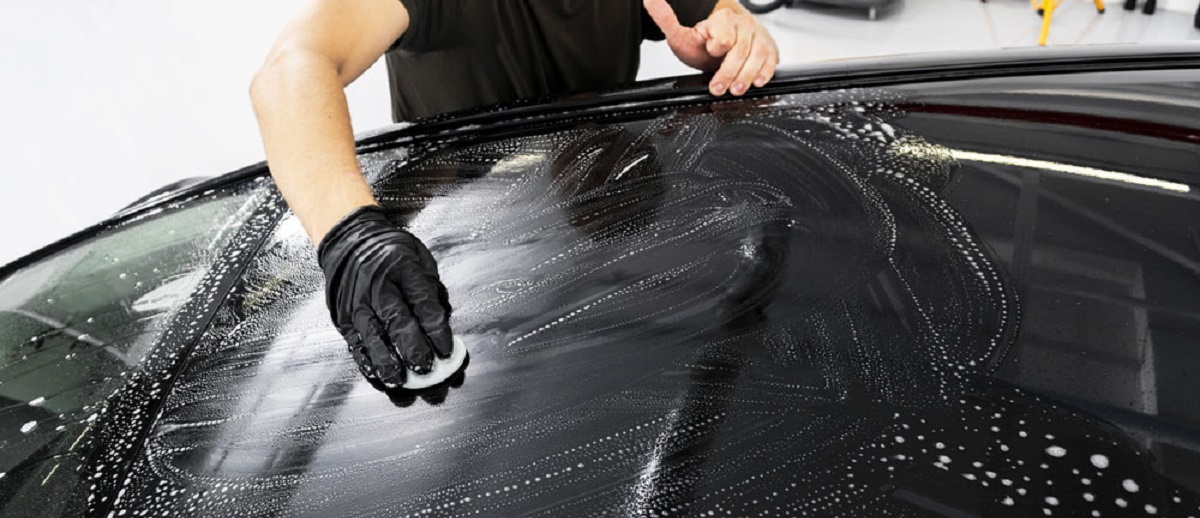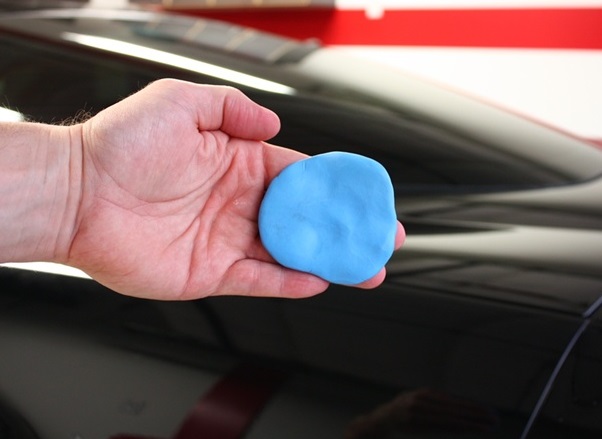
Glass-Like Shine Guide to Detailing Clay Bar Treatment
Contaminants that you can’t even see are accumulating on your car daily. Need proof? Use a small plastic bag, put your fingers in it, and very gently glide it across your paint. Feel that rough, textured surface? It’s the feeling of bonded impurities on your paint – sap, tar, industrial fallout, road film, and so on. All of that should be removed. Clay bar treatment is the key.
It’s a process of using a clay bar to eliminate containments from the surface of your car. Everyday containments that pollute and slowly destroy your vehicle involve things such as rail dust, brake dust, and industrial fallout. These pollutants can breakthrough paint, glass, and metal and settle on those parts even after several car washes and polishing.
A true professional detailer will always clay a vehicle before any type of thorough detailing. The incorrectly prepared surface will make the product not to bond appropriately, delivering you lackluster results.
Let’s take a look at a few important aspects of clay bar car treatment.
What Does a Clay Bar Do?
The surface of your car is continually exposed to airborne contaminants that will stick to the finish and potentially cause damage. Residues like brake dust, industrial fallout, bug residue, tar, etc. Some of these things can be corrosive, and they’ll start to damage the clear coat and make rust spots if not removed regularly.
Very small metal particles will build-in into the finish, and will show up as tiny rust-colored areas that are particularly easy to spot on white vehicles.
Regular washing doesn’t eliminate all of the contaminants from the surface either. If you drive a car through the occasional touch-less car wash, you’ll see that there’s still a film of road grime left. Over time it’ll build-up, and the only way to get rid of it is trough claying a car.
Through rubbing the clay across the car’s surface, it’ll trap these contaminants and particles producing a fresh, smooth finish.
How to Know if My Car Needs a Clay Bar Treatment?
Modern cars have exterior body panels that have a primer coat, paint/color coat, and a clear coat. The clear coat is a stratum of paint with no pigment, that’s why it has no color and referred as the clear coat.
The clear coat is made to prevent UV damage of the paint coat from the sun. An adequately maintained car should have glass-smooth paint surfaces that are free of roughness and bumpiness.
Not only does this treatment prevent potential damage from corrosive materials, but it also gives a smooth surface that lets your sealant to adhere better.
What Does Clay Bar Kit Contain?
If you’re just starting with claying, a clay bar kit is a must-have thing. You can find these kits on automotive product websites and Amazon.
In a standard kit, you’ll find:
Clay bars – They typically come in 2 to 8 oz. bars. Usually, 2 ounces is enough for three or four cars. One 2 oz. clay bar for car will last 18 months to 2 years if used on the same vehicle;
MUST READ: 10 Best Clay Bars for 2022 (AND BEYOND!)
Microfiber towel – Microfiber towel or microfiber cloths are one of the most essential items used by auto detailing professionals. Microfiber is a tiny synthetic fiber – about 1/100th the diameter of a human hair. It’s made from a blend of two materials – polyamide and polyester. They’re blended at different ratios to produce various types of microfibers. It results in a broader range of microfiber towels for particular applications.
Detailer spray & lubricant – It’s crucial to apply the detailer spray or lubricant before the claying process.
The lubricant makes a thin film over the surface, so it doesn’t stick to the surface or mar it with the debris. Also, it’s harder to clay without lubricant since the clay doesn’t glide over smoothly.
There’re two main sorts of clay lube: quick detailers and a mixture of shampoo and water solution. The solution may mar the bar, which will lead you to use more clay. The detailer spray is made to supplement the automotive bars and provide them with smooth flow across the different surfaces.
How to Use a Clay Bar?
Follow these 6 steps to learn how to clay a car:
- Cleaning – Before beginning the process, it’s recommended to wash and dry your vehicle to remove most of the surface containments.
- Apply detailer spray – Begin by spraying a small area of your with the detailer spray or lubricant. Keep the sprayed surface less than two feet.
- Gliding – The next phase is to softly slide the bar back and forth over the freshly lubricated space. You can initially anticipate the area to pull the clay while it’s taking out all the impurities. When you feel the clay gliding as planned, then you’ll know that the surface is clean.
- Inspecting – You should keep inspecting the clay to identify that you’re using a fresh side. After you’ve utilized both sides, you can bend the clay a few times, press, and then straighten it. Continue, but check again to see if any fragments of dirt could damage the surface of your vehicle.

- Maintain your work – After you’ve finished, wipe the surface down using a microfiber towel. You can also apply the lubricant to eliminate any clay residue. To see if it’s clean, slide the fingers across the paint. If it’s smooth, then you’re good. Otherwise, you’ll need to re-clay that surface. Don’t forget to re-lubricate.
Repeat these steps until you clean the entire car. A vehicle-treated with clay should feel smooth to the touch.
- Final touch – After the claying, you can use wax. The wax fills any gaps left from the contaminants, and it protects the paint from corrosion.
Which Cars Should Get This Treatment?
Any vehicle can benefit from clay treatments. When a car is on the road, it collects pollutants. Air pollution and road debris carry contaminants that settle onto a car and damage the finish. Left untreated, contaminants accumulate.
Having treatment twice a year removes the buildup of pollution and particles. Some drivers prefer to have treatment more often.
How Good is It on Older Vehicles?
A heavily contaminated paint surface can hide the serious defects of a painted surface, giving you the impression that the paint is in excellent shape. Contaminated dirt can be so severe that it’ll actually fill all of the swirls and scratches in the paint.
Exteriors in this shape have usually never been waxed in years and have never been washed in many weeks, if not months. So, once the car has been entirely washed to remove the initial layer of dirt, and the vehicle is given this treatment to remove the dirt embedded in the clear coat, the surface is then clean and ready for the ultimate shine.
It can only be produced by professional car paint polishing used with the adequate professional gear to repair weeks, months, or years of damage.
Clay Bar vs. Clay Mitt
The most noticeable difference between these two is the form. But there’re a few other functions that differentiate the two. First, since bars are smaller, you get less use out of them.
They typically last up to about twenty applications, while clay mitts can last closer to one hundred. Also, you need to keep bars covered, so they don’t dry out, while clay mitts don’t need to be covered.
In case you drop a bar on the floor or ground, you’ll need to use a new one since dust and dirt will automatically stick to it. With a clay mitt, you can wash it off with water if you drop it.
Therefore, knowing all these facts about these cleaning solutions, why anyone would use the bar if the mitt is quicker and easier to care for.
The chief reason is that many folks who detail their cars have found that the clay bar is more effective. So, if you see a lot of debris on the surface that you need to remove, consider utilizing a clay bar first.
